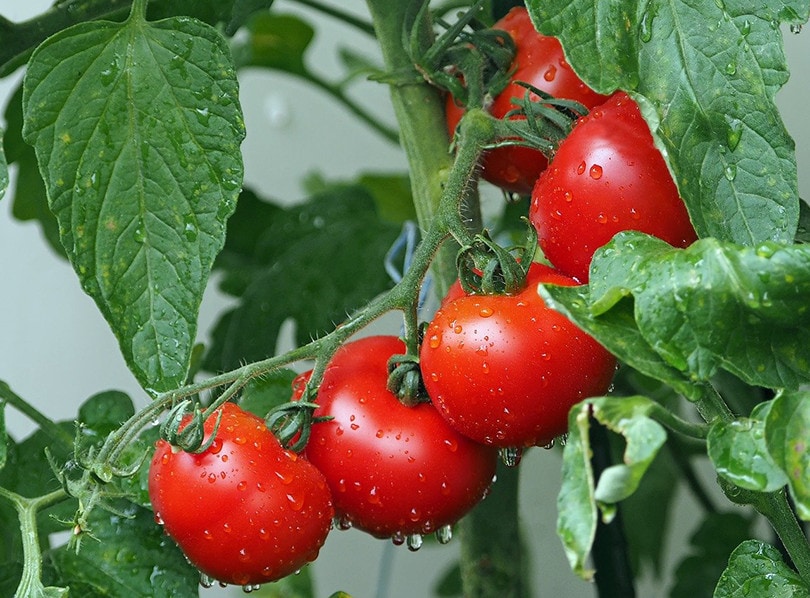New England’s short growing season and cooler summer temperatures present challenges for tomato lovers. However, with careful variety selection, proper care and ideal timing, New England gardeners can still enjoy a bountiful tomato harvest This article explores the top 10 best tomatoes to grow for thriving in New England’s unique climate.
Factors to Consider
Several factors impact a tomato variety’s performance in New England:
-
Maturity Date Select early-maturing tomatoes that can ripen fruit before fall frosts arrive Look for maturity dates under 70 days.
-
Cold Tolerance: Choose varieties that can withstand New England’s cooler temperatures. Look for descriptors like “cold-set” and “cool-season”.
-
Disease Resistance: Opt for disease-resistant varieties to combat common tomato afflictions like blight and wilt. Prioritize resistance to late blight in particular.
-
Determinate vs. Indeterminate: Determinate (bush) tomatoes ripen over a short period, while indeterminate (vining) tomatoes produce throughout the season. Determinate types are recommended for short seasons.
-
Fruit Size: Typically, earlier varieties produce smaller fruits. If harvest time is limited, prioritize production over size.
1. Siletz
Days to Maturity: 70-80 days
With high late blight and cold temperature tolerance, the medium-large oblong Siletz tomato continues producing into September. This makes it an ideal late season variety for New England.
2. Defiant
Days to Maturity: 75 days
Defiant tomatoes offer robust late blight resistance in a medium-sized, deep red fruit. The 75 day maturity time allows for ripening before fall frosts.
3. Juliet
Days to Maturity: 60 days
Juliet is a early grape tomato prized for its resistance to cracking and splitting. The vigorous, high-yielding vines produce abundant sweet fruits perfect for salads and snacking.
4. Legend
Days to Maturity: 65 days
Legend is a determinate cherry tomato that ripens clusters of round, sweet fruits in about 65 days. It’s one of the best varieties for withstanding New England’s cool temperatures.
5. Oregon Spring
Days to Maturity: Less than 60 days
With extremely early maturity under 60 days, Oregon Spring is specially bred for cooler climates like New England. It produces medium-sized oblong fruits.
6. Mountain Merit
Days to Maturity: Early season
Mountain Merit is an early, large-fruited variety with disease resistance to fungi, viruses and more. It’s a cold-set tomato optimized for short seasons.
7. New Girl
Days to Maturity: Early season
New Girl is one of the earliest tomatoes, ripening its small-medium sized fruits in less than 60 days. It offers versatile disease resistance.
8. Early Girl
Days to Maturity: 50 days
A classic early producer, Early Girl is an indeterminate variety that bears tasty 4-6 ounce fruits about 50 days after transplanting.
9. Manitoba
Days to Maturity: Early season
Manitoba is a compact, early determinate variety that produces small-medium fruits with resistance to verticillium wilt and fusarium.
10. Sub Arctic Plenty
Days to Maturity: Very early
Bred specifically for cooler climates, Sub Arctic Plenty is a very early maturing tomato that bears small-medium fruits to ripen before fall frosts.
Growing Tips
-
Start seeds indoors 6-8 weeks before transplanting after the last spring frost. Use grow lights and heat mats.
-
Harden off tomato seedlings for 7-10 days before transplanting by gradually exposing them to outdoor conditions.
-
Transplant into the garden 1-2 weeks after the average final frost date, around late May to early June.
-
Use row covers, cloches or cold frames to protect plants from cold weather and extend the season.
-
Monitor for pests and diseases. Control organically as needed.
-
Time plantings and variety selection to enjoy tomatoes from early summer through fall.
With strategic variety selection for cold hardiness, disease resistance and fast maturity along with attentive care, New England gardeners can enjoy ripe, juicy tomatoes straight from their backyard all season long.

What tomato varieties are recommended for Maine and what are some growing considerations?
What tomato varieties would you suggest for in-ground planting? I’d like to plant 2-3 varieties for eating off the vine, and for canning BBQ sauce and salsa. Are there any other considerations for tomato growing in Maine?
Abi Griffith, Horticulture Community Education Assistant I would suggest you do a soil test in the sight you will be planting, if you haven’t already. It’s a helpful practice and is often the key to understanding what is going on in your garden and setting your plants up for success. Go to the
Here is a quick instructional video on how to collect a soil sample for submission. There is an approximate two week turn around and you’ll probably have to wait until your soil warms up!
- Planting time (you want to wait until the danger of last frost is gone) which is typically late May to early June. No need to get them in extra early as they won’t be doing much growing and it has been my personal experience to still get good yields into the later season, even if they go in a little later.
- Planting healthy transplants
- Staking and pruning (for disease management and increasing yield).
- Refer to New England Vegetable Management Guide – Tomatoes Outdoor for an in depth look into growing tomatoes outside in New England.
Best Tomato to Grow in YOUR Zone
FAQ
What are the best tomatoes to grow in New England?
‘Defiant’ Tomato
It is highly resistant to late blight and moderately resistant to early blight. It is a medium-sized slicing tomato that is deep red and is carried on determinate plants.
When should I plant tomatoes in New England?
Throughout much of New Hampshire, Memorial Day weekend is a safe time for transplanting tomatoes, though southern gardeners may often plant a week or two …
Why put baking soda around tomato plants?
Baking soda is sometimes used around tomato plants to deter pests, reduce soil acidity, and potentially prevent fungal diseases.
Which is better, Big Boy or Better Boy tomatoes?
